
The official date for Chinese New Year is this Saturday, January 25, though preparations began last Thursday.
Each year corresponds to an animal in the Chinese zodiac created by the celestial Jade Emperor who invited twelve animals to serve as his guards. The earlier an animal passed through the heavenly gate, the higher rank it would have in the new zodiac.
There are several stories about how Rat became the first animal of the zodiac. One says that Cat expected to have a spot, but wanted to take a nap, so he asked Rat to wake him up when it was time to leave for the Jade Emperor’s palace.
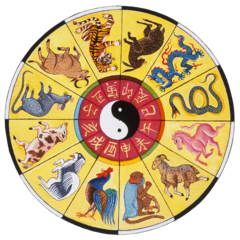
Rat didn’t have an invitation, so he decided not to wake Cat. The next day, Cat realized he’d slept too long. Angry at Rat’s betrayal, Cat began chasing him, which is why cats hunt rats.
On the way to the palace, Rat encountered a river. The current was too swift for Rat, but when he saw Ox crossing the river, he jumped into Ox’s ear. Rat said he would sing encouragement to Ox, if Ox allowed him to join him on the journey.
When they reached the palace, Rat jumped out of Ox’s ear, and arrived first, with Ox a close second.
Tiger and Rabbit arrived shortly after, followed by Dragon who was delayed because he stopped to rescue a village from a flood. The emperor said Dragon’s son could come in next, but he wasn’t there, so Snake said he was Dragon’s adopted son.
Horse and Goat arrived together, followed by Monkey. Rooster, Dog, and Pig arrived last. Pig was delayed because a wolf destroyed his house, and he had to rebuild before he could leave home.
2020: YEAR OF THE RAT

In a 12-year cycle, each animal is associated with a year. This is the Year of the Rat. Mythological rats are a sign of wealth. Due to their rapid reproduction, couples often pray to the Rat for children.
Rats are clever, successful, and prefer a quiet life. People born in a Rat year are sometimes thought to be stingy.
NOT ALL RATS ARE THE SAME
People born in a Wood Rat year [1924, 1984] are said to be independent, but they also conform to traditional thinking.
Those born in a Fire rRat year [1936, 1996] are clever and capable, but lack discipline.
Earth Rats [1948, 2008] are contented and adaptable.
Metal Rats [1960, 2020] are sensitive and persuasive.
And Water Rats [1912, 1972] are intelligent.
SPRING FESTIVAL
The Chinese New Year celebration is part of the annual Spring Festival, a time of new beginnings when people welcome spring. The Spring Festival is the longest Chinese holiday. Everyone is expected to be home for the New Year dinner. Since most elderly parents live in villages, while their children work in cities, there is an annual migration known as chunyun.
It’s a time of family, but also a time to discover if there are any love interests among the children. Some singles hire a fake boyfriend or girlfriend to go with with them, tho’ why this part-time employee doesn’t have to go to her or his own family is unclear.
MYTHS ABOUT THE COLOR RED & FIRECRACKERS
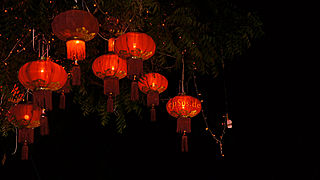
There are several myths surrounding the Spring Festival. These explain various customs, such as firecrackers and why the color red is popular at new year.
Once there was a monster named Nian, a horned beast resembling a dragon and a Kirin. He lived at the bottom of the ocean, but once a year Nian came to earth to eat animals and humans. Usually, he stopped at a village since he would find plenty to eat. The villagers, in turn, ran away to the mountains.
One time, a beggar came into the village as everyone was leaving. He promised an old woman that if she gave him shelter, he would protect her from Nian. She agreed, and the beggar attached red paper to the doors of every house.
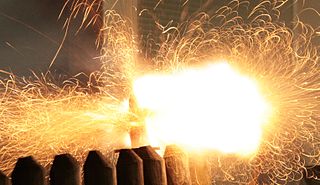
Nian, it turns out, hates the color red, so when he arrived at midnight, he stopped short and roared his frustration. Suddenly, firecrackers sounded. Nian was afraid. When he saw the beggar clothed entirely in red, Nian ran away.
Today families eat together in their homes on New Year’s Eve surrounded by red decorations. People wear red clothing as the beggar did long ago, and at midnight, firecrackers go off.
More firecrackers go off the next day to welcome the new year. Celebratory fireworks for Chinese New Year have become a global problem. They cause extensive pollution and are dangerous for anyone with respiratory problems. Increasingly, cities are trying to control, or completely ban, the use of fireworks.
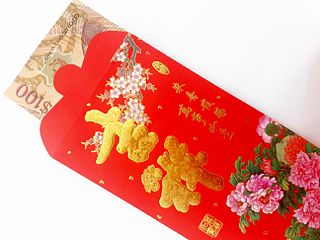
Another popular custom is giving red money envelopes. Some say this is a way to share family wealth, or for employers to give their staff a bonus. But most of the red envelopes are for children to keep evil spirits away from them.
An evil spirit named Sui once appeared on New Year’s Eve. As he passed sleeping children, he patted them on the head. The children became sick.
In order to keep their child awake, one couple played a game that included golden coins. Eventually the child fell asleep, so they put the coins on top of red paper next to the child’s head. When Sui arrived, light flashed off the coins, and he ran away.
So now, parents give children money wrapped in red paper on New Year’s Eve.
GONG HEI FAT CHOY
When you greet friends and neighbors on New Year’s Day, wish them prosperity in the year ahead by saying Gong Hei Fat Choy [Cantonese pronunciation] or Gong Xi Fa Cai [Mandarin pronunciation].
LUCKY FOOD
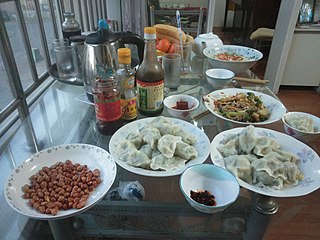
Chinese New Year is also known for its lucky foods, among them:
- Fish for Prosperity
- Dumplings, Spring Rolls, and Golden Fruit for Wealth
- Tangyuan [rice balls] for Family Harmony
🍊🍊🍊
Jade Emperor
Chinese Zodiac by RootOfAllLight
Red Chinese Lanterns by pesos .de
Firecrackers by ABF
Red Envelope by Jpquidores
Dumplings for Spring Festival by Jason M. C., Han

Sandra Wagner-Wright holds the doctoral degree in history and taught women’s and global history at the University of Hawai`i. Sandra travels for her research, most recently to Salem, Massachusetts, the setting of her new Salem Stories series. She also enjoys traveling for new experiences. Recent trips include Antarctica and a river cruise on the Rhine from Amsterdam to Basel.
Sandra particularly likes writing about strong women who make a difference. She lives in Hilo, Hawai`i with her family and writes a blog relating to history, travel, and the idiosyncrasies of life.

